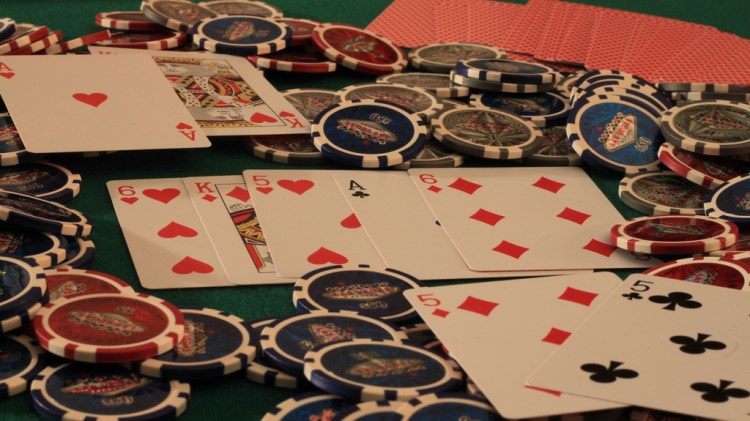Online cardrooms offer five-card draw poker in several formats. Michael walks us through some preliminary descriptions and strategies and finds some of the best locations.
How to Beat Low-Stakes Online Draw Poker

How to Beat Low-Stakes Online Draw Poker
by Michael Wiesenberg © 2019 Great Bridge Links
The first introduction many get to poker is a penny ante game, a private or home poker game in which the social aspect is more important than winning money, usually accomplished by permitting only relatively small bets (that is the stakes often are literally pennies).
Such a game features an atmosphere that is informal, relaxed, loose, and often without strict adherence to rules You may have played in such a game in a college dorm or at family gatherings. The form of poker most often played in these friendly games is five-card draw poker.
The most common forms of poker found in public cardrooms (bricks and mortar casinos or b&ms) are Hold’em, Omaha, and Seven-card Stud. No public cardrooms in North America offer five-card draw, and I can’t find any in the rest of the world in a web search. The other forms of poker feature faster play and more action, and that’s what most b&m players are looking for. If you want a fun game played at low stakes, though, you can find five-card draw at several online poker sites.
Online cardrooms offer five-card draw poker in several formats. You’ll find stakes as small as 10¢/20¢ to as high as $1/$2. You can find bigger games, but they are rare and for the most part usually have only two participants. The games are mainly two formats, limit and no limit.
You can find draw poker at these sites: Betfair, Everest, Ladbroke’s, Tiger Gaming, Bwin, Black Chip, PokerStars.eu, and PokerStars.com. PokerStars has the largest number and greatest variety of draw games.
As with any poker site, familiarize yourself with how things work by first sitting in the free games (those with “play money” stakes). Actual play bears little relation to how the play is in the real money games. When it costs nothing to remain in a hand, you’ll find almost every pot contested by most — if not all — players. In the real money games, most pots are contested by only two players. The free games show you how to bet, how to replace those cards you wish to exchange, and other actions unique to draw.
Online draw tables have six seats. Similar to hold’em, games have two blinds. In a 25¢/50¢ game, the player to the left of the dealer (small blind) puts 25¢ into the pot before the cards are dealt and the player to their left (big blind) puts in 50¢. The first player to the left of the big blind must either fold, open for an amount equal in size to the big blind, or come in for a raise. They fold, open for 50¢, or (in a limit game) open for $1 (or, in no-limit, come in for a raise, which bet must be $2 or more). The remaining players act in turn, with the same options. After the dealer has acted, the small blind has these options, except that they already have chips in the pot, which are part of their bet). Then the big blind acts, with the same choices. Players then replace any number of cards (the draw), from none (stand pat) to all five, followed by a final round of betting
Winning Strategy
I numbered positions by how many players remain to act. Thus the player to the left of the big blind is 5; the big blind is 0.
Before the draw: position 5, open with a pair of aces or better; position 4, kings or better; 3, queens; 2 (the dealer), tens; 1 (small blind), sixes; 0 wins the pot if no one has opened. Always come in for a raise; in a no-limit game make that 2 to 2.5 times the size of the big blind. Raise in most positions with aces or better (two pair and up) if the pot has been opened for the minimum. If the pot has been raised when it gets to you, generally play only with a hand one better (generally two medium pair or higher) than what the player who raised would on average have.
Generally don’t play four cards to a straight or flush unless the pot already contains at least three times what it would cost to get in (or is very likely to have that much after the draw). That means you often don’t come in first with such a draw. If you have a straight or flush draw that also includes a large pair, it’s often best to draw three cards to the pair.
On the draw, usually take three cards to a pair. Some players always draw two cards to a pair (keeping a kicker), hoping to fool their opponents (which often doesn’t work). To three of a kind (trips), draw either one or two cards, in about the same proportion. (If you always make the same draw, even unsophisticated players will quickly figure out what you’ve got.)
After the draw, generally bet strong hands and check (planning to call or fold based on what you’ve observed about the opponent).
This is necessarily a shortened form of the complete strategy, whose nuances would fill 10 times the allotted space. Watch At the Casino Magazine for more!








